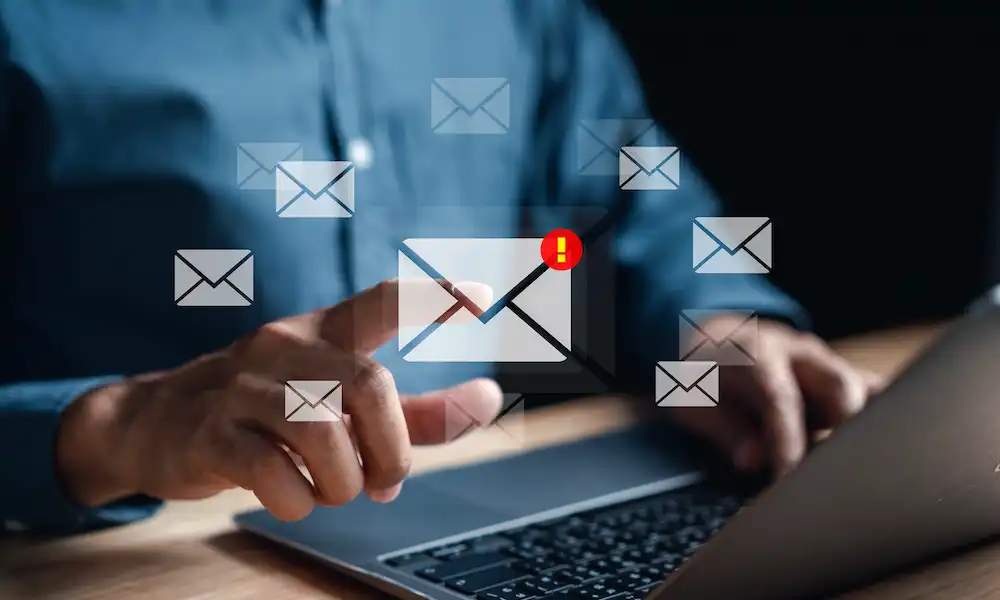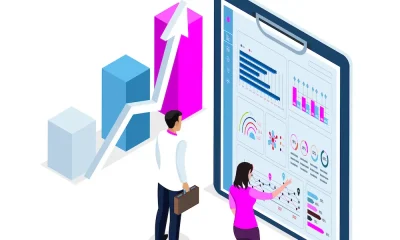Marketing
Top 5 Best Practices For Your Email Marketing

Email as a trusted communication channel still reigns supreme with consumers and businesses. While there is a lot of competition now, particularly with instant messaging apps like WhatsApp, Slack, and Messenger, email is the most ubiquitous and preferred digital communications channel.
Why Email?
It’s all about the numbers; for example, in 2019, there were 3.9 billion users, and email has not yet peaked, with more growth forecasted, including 4.3 billion users by 2023 and up to 4.6 billion by 2025.
Email has stood the test of time for all types of content, including personalized marketing messages. Users can choose who can send emails to their inbox and which addresses are considered ‘SPAM.’ Plus, businesses realize email marketing provides a healthy conversion rate from their opted-in subscribers, email list contacts and a higher ROI than other digital marketing options, including SMM and PPC.
Gmail and Gmail Mail Merge
You may think your business needs to use an ESP like MailChimp to get audience-targeting features. However, because third parties provide customized Gmail mail merge solutions, you can use the most popular email provider, Gmail. For example, with the Gmail mail merge solution, marketers realize they can use their Gmail account for email marketing.
You can also use Gmail’s built-in mail merge feature, but it has some limitations. These include a lack of extended merge fields for personalized content and limited campaign tracking, which is crucial for successful email marketing campaigns.
For example, with one Gmail mail merge solution provider, the options include:
- Bypassing Gmail’s sending limit of 500 emails per day
- Automating delivery of initial and recurring campaigns
- Targeted segmentation to include/exclude recipients
- Personalized content, including attachments
Plus, you can also adhere to email marketing best practices.
Compliant Email Marketing
Email marketing is a cost-effective digital marketing strategy. However, just like other marketing strategies, you need to know how to reach and engage with your target audience and do so compliantly. This starts with how your business is capturing customer data.
1. Customer Data
Your business must adhere to customer data protection and privacy laws and regulations for the regions your business reaches.
How your marketers capture, store, access, and use customer data is part of the laws and anti-spam acts. To ignore these laws and plead ignorance is no defence. For businesses and individuals, the fines are hefty. Plus, consider how the publicity of non-compliance will damage your brand reputation.
Therefore, your first focus must be how your business manages customer data. For example, the GDPR (General Data Protection Regulation) is far-reaching, and your staff needs to know what it is and what they need to do to ensure your business uses best practices.
When your team is empowered with data protection and privacy knowledge, they can forge ahead and capture your business needs from its targeted audience to create personalized email marketing campaigns.
2. Use email authentication protocols
Mandatorily use email authentication to reduce the chances of your emails being rejected or marked as spam. Email authentication confirms your identity as a sender. The authentication protocols check and certify your emails by authenticating your email domain or your DNS server.
The receiving email server can then confidently deliver the email to the inbox instead of trashing it as spam.
If your emails are not authenticated, poor email deliverability is likely. Your emails won’t reach users in plain text, and your domain will get a bad reputation. It is, therefore, highly recommended to set up all the tech specs for sending.
Setting up just one method could not mean 100% of emails delivered. Hence, using multiple authentication methods and monitoring how they impact email deliverability is a good idea.
Configure DKIM, SPF, and DMARC authentication records.
DKIM
Domain Keys Identified Mail – is a digital stamp or signature
3. Less is More – Volume of Emails
The old way of thinking was to repeatedly send emails to boost traffic to your website or gain your customers’ attention.
However, local and global anti-spam laws, including the instant unsubscribe, could prove detrimental to your strategy when customers are driven to unsubscribe from your mailing list as your emails are spamming their inboxes!
Be targeted with your email content and only send it to the email list subscribers, aka contacts with an interest or meet the criteria. For example, if you have a special offer on pet food, send a promotional email to subscribers who have a pet or want one.
Similarly, sending your promotional email to ‘all’ your email list is appropriate if you have an online store-wide promotion.
4. Content is Everything
Use catchy and crisp subject lines.
The subject line of your email plays a crucial role in improving open rates. It is the first thing to catch your customers’ attention and get them to read your email.
Use emojis that aptly convey the message and add a visual effect to your message.
On average, a subject line should not contain more than 50 characters and keep it up to 5 words. It is also wise not to include words or phrases that could trigger your email to be sent to the spam folder. For example, Using ‘Click Here’ is a huge red flag. Instead, use an appropriate, meaningful call-to-action, e.g., Pre-Order, Schedule an Appointment.
Avoid false advertising and ruining your reputation. The subject line should include a short summary of what to expect in the body of the email.
Personalization
Personalize your emails with information unique to your email list subscriber, aka customer. They will take action, i.e., read the email message, and if they’re interested in the content, they will click a link that should take them to your website or online store.
Emails that do not address the customer personally usually end up in Thrash. Managing a customer as “Dear Friend” or “Hi” is another sign of spam.
Ensure the automated email system adds the recipient’s name to the content.
The purpose of personalization is not to overwhelm the recipient with everything you know about them. Instead, it shows them the relevant content and what you have to say and offer that needs their attention. Email content must be reviewed, edited, and read well to engage the recipient.
Take your time to get the content, including images, links, and maybe a good video. Marketers know that conversion, i.e., opens and clicks, are higher when each email list subscriber believes you are writing specifically to them.
Consistency
Remember to be consistent with your message in your emails and in the content on your website. Proofread everything and use simple, straightforward language to avoid alienating your audience.
5. Prepare Ahead of Time – with an email drip campaign
Target your audience well ahead of events. For example, plan and start your campaign in January if you are marketing your product to be sold on Valentine’s Day. Keep a consistent schedule of sending emails.
The email content should build up the tempo as the date approaches the event. Plan a special offer and keep up the promise. To further drive confidence in your business, your subsequent emails could bear testimonials from customers who benefitted from the offer.
Summary
In summary, in email marketing, like all marketing and sales today, everything you do revolves around your customers. From email authentication to delivery time and to whom you send the email, start with your customer being front and center. This strategy will determine the content and your regularity of contact.
Email is preferred by marketers and recipients, and it will continue to outshine other channels as more businesses use best practices for deeper engagement and better ROI.






